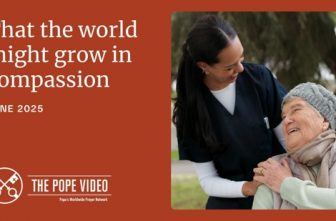
When Marisol Duran was choosing a school for her boys, now 7 and 9, she had to decide between the faith and values found in Risen Christ School in Minneapolis and instruction in her children’s native Spanish language found at a public school.
While Duran is glad she chose Risen Christ for her sons, she may now be able to find both faith and instruction in Spanish at the Minneapolis Catholic school by the time her 2-year-old twins are ready for kindergarten if Risen Christ goes ahead with plans to become a two-way English and Spanish immersion school.
“If it turned eventually bilingual, it would be a great asset just to the school and drawing more people in because not all the schools can offer those three components: faith, values and academics,” said Duran, who attends Ascension parish in Minneapolis.
With the goal of helping its students – 75 percent of whom are English language learners – overcome an achievement gap with native English speakers, Risen Christ this year will design its own program with the help of language experts. They will coordinate instruction in Spanish and English so all students will become bilingual and biliterate.
Risen Christ is one of 12 Catholic pre K-8 schools in the country chosen to participate in the Two-Way Immersion Network for Catholic Schools of the Innovation Institute for Catholic Educators, a partnership with the Barbara and Patrick Roche Center for Catholic Education of Boston College and the National Catholic Education Association.
In addition to receiving assistance in developing a custom program, Risen Christ will have the chance to network with the other schools and receive mentoring and coaching during the three-year implementation, said Helen Dahlman, Risen Christ president. The school’s board will review the plan that will be developed this summer and, after considering cost and other factors, decide whether to move ahead with it in 2014, she said.
While immersion has become widely used in public schools, Catholic schools are only beginning to embrace it as they enroll more English language learners, Dahlman said. Studies show two-way immersion is most effective, she added.
There are a number of learning models that involve different percentages of Spanish to English in the classroom, said Heather Gossart, co-director of the Innovation Institute for Catholic Educators. What they have in common is that students who are native to each language become models for each other.
English-only proponents endorse two-way immersion because it’s inclusive and all students benefit, she said.
Said Dahlman, “It gives them an advantage in careers in the future. It is already important for people to be able to speak a second language. It makes you much more marketable when you’re looking for a job in whatever field if you can speak another language.” Two-way immersion also honors both cultures, she said.
Teaching students in their native language helps them learn a second language more effectively because without literacy in their own language, they are likely to fall behind when they reach middle school, Dahlman said. “What we’ve been noticing is when children come into our school, they don’t have a literacy background in either of the languages and so you can’t teach them English when they have no foundation in literacy in their native language.”
Taking students out of their regular classes for added English as a Second Language instruction isn’t enough to help them succeed, Dahlman said.
If it decides to implement two-way immersion, Risen Christ will do it one grade at a time, starting with kindergartners in the fall of 2014, she said. The program will require that the school recruit and retain fluent Spanish speaking teachers, she said, adding that Risen Christ currently has four.
Two-way immersion represents a “game changing initiative, a new way of looking at education,” Gossart said.
“Basically, what the program is going to teach schools is how to stop thinking in majority/minority terms and start thinking bilingual,” she said. “You’re not teaching English students to speak Spanish or Spanish students to speak English, you’re teaching them to be totally bilingual so that their core curriculum is going to be taught.”




